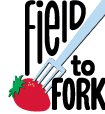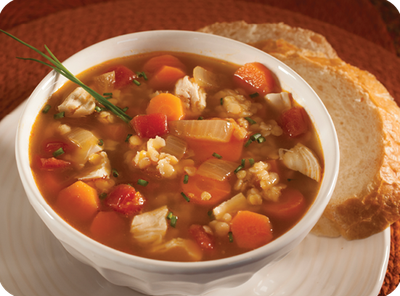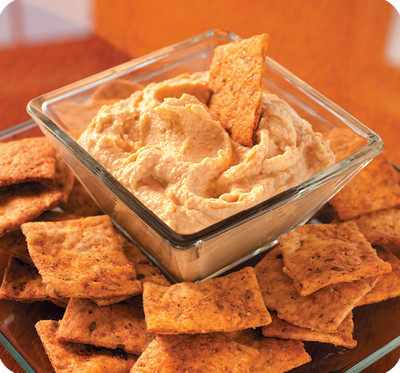Eating As We Age: Pulse Foods Are Fiber-rich (FN2029, July 2021)
Availability: Web only
 Fiber is important for maintaining a healthy digestive system, managing diabetes and preventing heart disease. Adequate fiber helps us maintain our weight throughout our lives because it makes us feel full and, therefore, helps us manage the amount of food we eat.
Fiber is important for maintaining a healthy digestive system, managing diabetes and preventing heart disease. Adequate fiber helps us maintain our weight throughout our lives because it makes us feel full and, therefore, helps us manage the amount of food we eat.
What are Pulses?
Pulses are the dry, edible seeds of legumes. They include lentils, peas and chickpeas. They are an excellent source of fiber, protein and a variety of vitamins and minerals.
Pulses are part of the protein and vegetable food groups shown on www.ChooseMyPlate.gov. Many adults do not meet the recommendations for vegetables.
- Women ages 31 and older: 2 to 3 cups of vegetables daily
- Men ages 31 to 59: 3 to 4 cups of vegetables daily
- Men ages 60 and older: 2½ to 3½ cups of vegetables
How Much Fiber Do We Need Per Day?
On average, most adults need 21 to 38 grams of fiber per day. Fiber needs are based on the number of calories consumed (14 grams fiber per 1,000 calories). Therefore, someone following a 2,000-calorie diet would need 28 grams of fiber per day.
Men usually require more fiber than women because they consume more calories. Most adults get less than half of their daily fiber needs.
Note: Visit with a health-care provider before making major changes in your diet. When increasing the fiber in your diet, be sure to increase the amounts of fluid. Drink plenty of water, even if you do not feel thirsty.
What Foods Are Rich in Fiber?
As shown in this table, pulse foods are excellent sources of fiber. Read Nutrition Facts labels to learn more about the fiber content of your food choices.
| Food | Serving Size | Fiber (g) |
| Split peas, cooked | 1 cup | 16.2 |
| Lentils, cooked | 1 cup | 15.6 |
| Black beans, cooked | 1 cup | 15 |
| Chickpeas (garbanzo beans), cooked | 1 cup | 12.6 |
| Blueberries | 1 cup | 6.2 |
| Toasted oat cereal (ready-to-eat) | 1 cup | 6.0 |
| Broccoli, cooked | 1 cup | 5.2 |
| Apple, with skin | 1 medium | 4.8 |
| Carrots, cooked | 1 cup | 4.8 |
| Brown rice, cooked | 1 cup | 3.5 |
| Whole-wheat tortilla | 1 ounce | 2.8 |
Source: Values are from the Department of Agriculture FoodData Central.
Recipes to Try

Red Lentil Soup
1 c. red lentils, dry
4 c. chicken broth, low-sodium
2 medium carrots, diced (about 1 c.)
¼ tsp. cumin
¼ tsp. paprika
1 chicken bouillon cube, low-sodium
½ can diced tomatoes and green chilies, drained (about 5 ounces)*
1 c. onion
1 clove garlic, minced
1 Tbsp. olive oil
½ c. diced roasted chicken (optional)
½ lemon, juiced (about a c. juice)
Fresh parsley (for garnish)
Sort, then rinse lentils. Add to broth and bring to a boil. Add diced carrots. Cover; cook for 30 minutes while stirring occasionally. When lentils are tender, add dry spices, bouillon cube and diced tomatoes. Sauté onion and garlic in a frying pan using olive oil. When golden brown, add to soup mixture. Add chicken if desired. Simmer for five minutes. Turn off heat and add lemon juice to pot; stir. Garnish bowls of soup with parsley if desired.
*The remaining tomatoes and chilies can be frozen in a labeled freezer container for later use.
Makes six servings (¾ c. per serving). Each serving has 190 calories, 4 grams (g) fat, 13 g protein, 26 g carbohydrate, 6 g fiber and 125 milligrams sodium.

Hummus has become a popular food as a dip or sandwich spread.
Hummus
1 (15.5-oz.) can chickpeas
4 Tbsp. tahini**
¼ c. lemon juice
3 cloves crushed garlic
1 tsp. salt
Optional spices (cumin, cayenne pepper, hot sauce)
Puree chickpeas in blender or food processor. Add remaining ingredients and blend until smooth. The final product should be thick and smooth. Serve with crackers or vegetables such as carrot sticks.
Makes 12 servings. Per serving: 70 calories, 3 grams (g) fat, 3 g protein, 10 g carbohydrate, 2 g fiber and 160 milligrams sodium.
**Tahini paste is made from sesame seeds. It often is found by the condiments or in the ethnic food area of supermarkets.
Support for production of this publication was provided by: www.northernpulse.com


